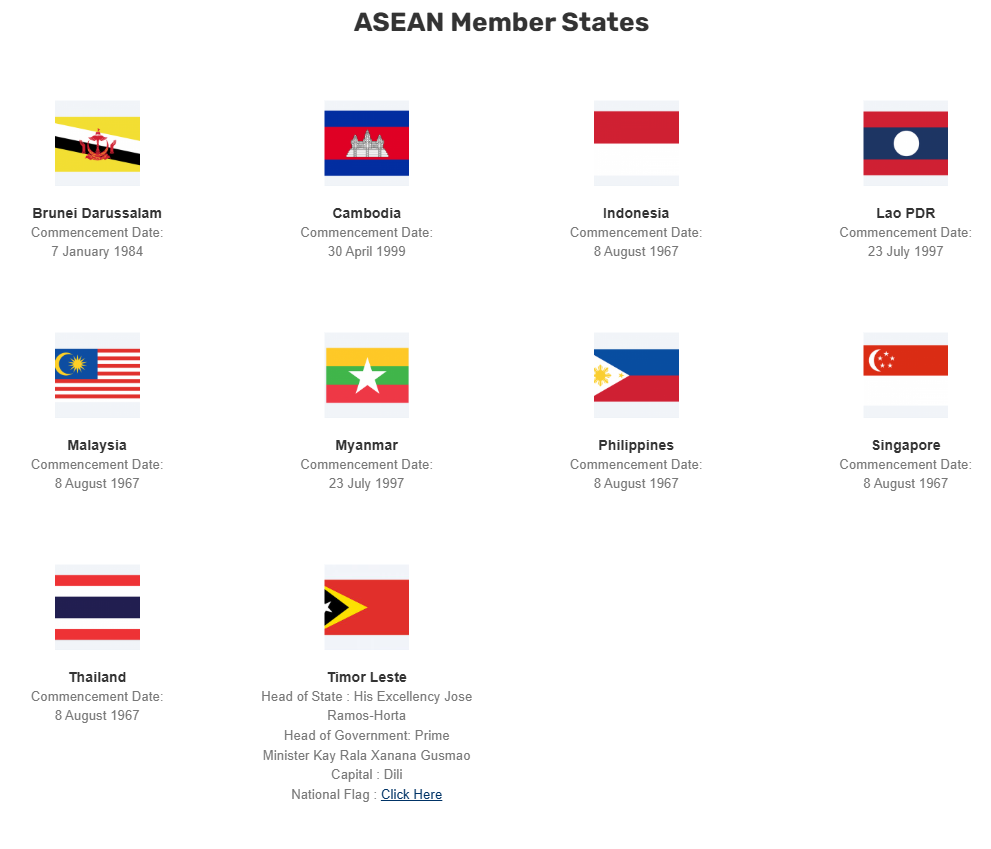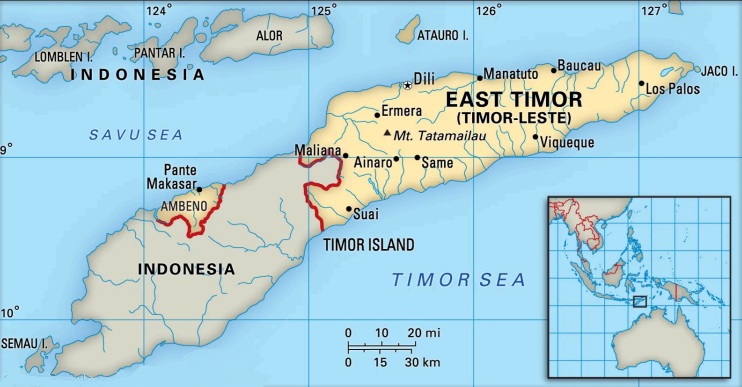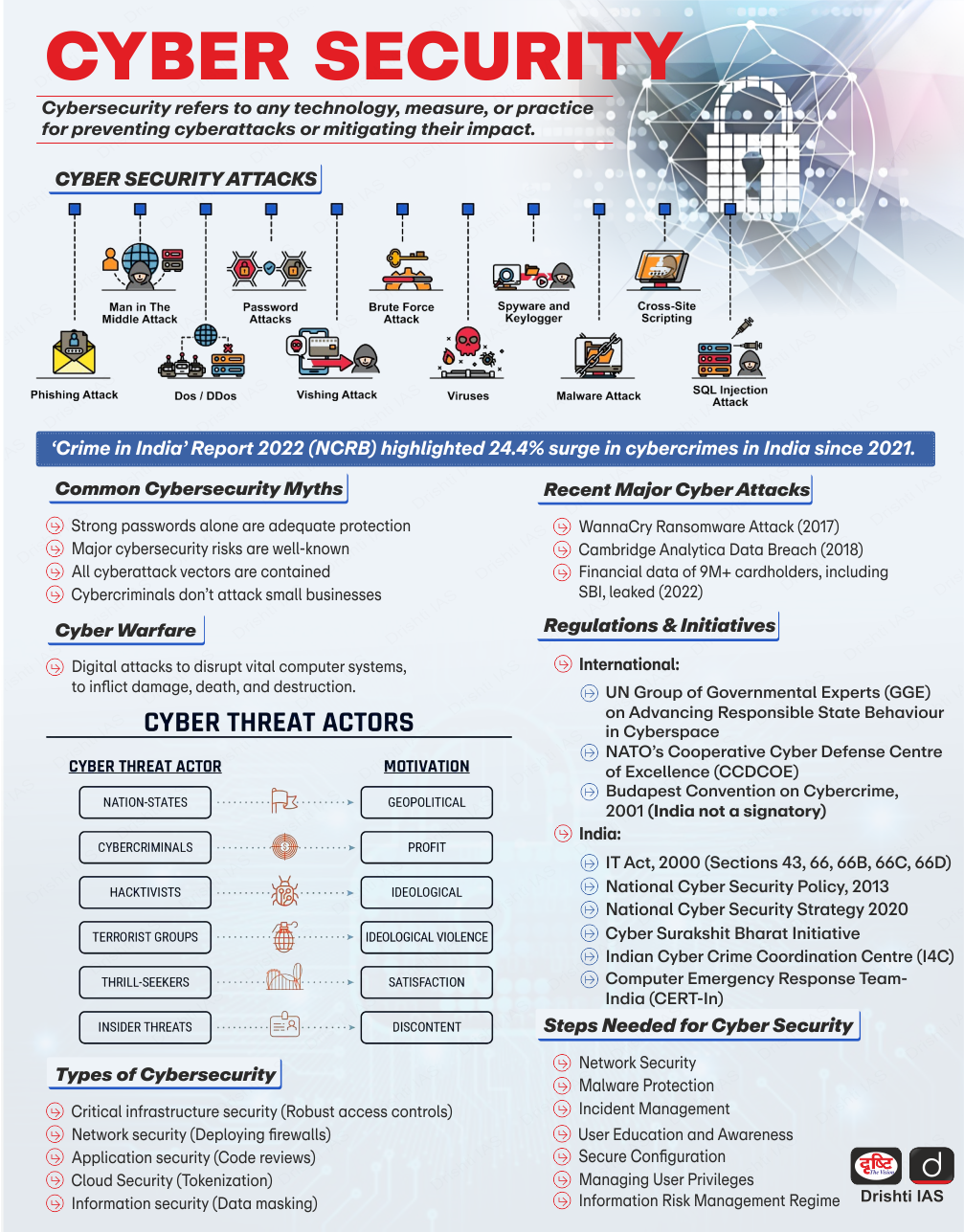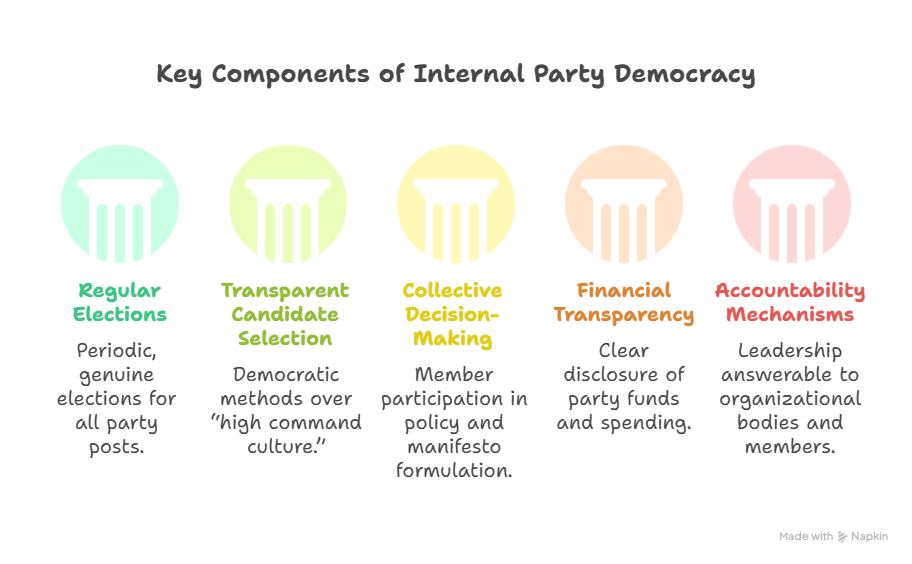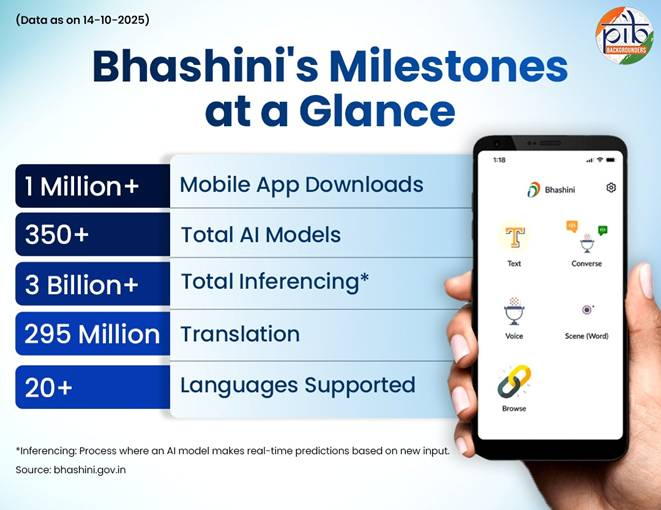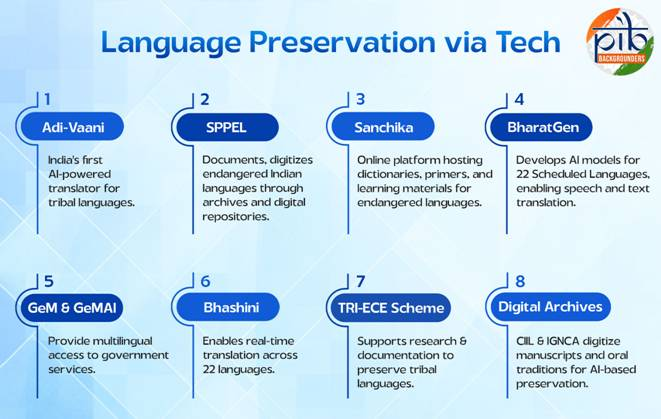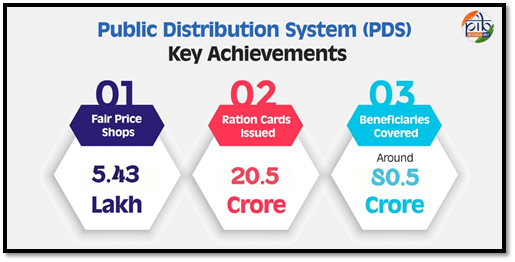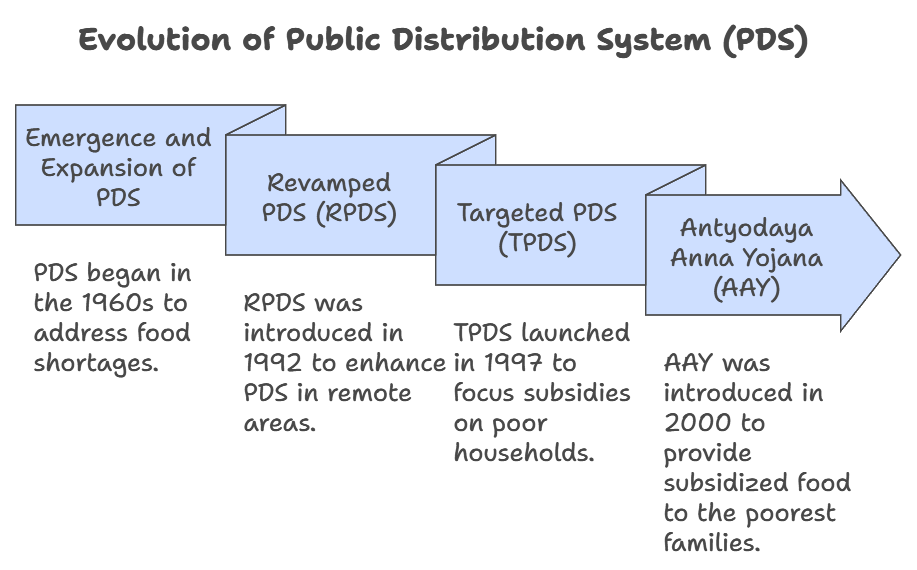22nd ASEAN-India Summit
For Prelims: Indo-Pacific region, ASEAN, Act East Policy, Free Trade Agreement, Strategic Partnership to Comprehensive Strategic Partnership
For Mains: Areas of Cooperation Between India and ASEAN, Significance of the Indo-Pacific Region for India, Key Issues Hindering India's Active Engagements in the Indo-Pacific
Why in News?
The 22nd ASEAN–India Summit, held in Kuala Lumpur, saw India declare 2026 as the ASEAN-India Year of Maritime Cooperation and marked a major step forward with the adoption of the ASEAN-India Plan of Action (2026–2030) under the Comprehensive Strategic Partnership (CSP).
What are the Key Highlights of the ASEAN-India Summit 2025?
- ASEAN Outlook on the Indo-Pacific (AOIP): India reaffirmed its commitment to ASEAN Centrality, Unity, and the ASEAN Outlook on the Indo-Pacific (AOIP).
- India welcomed Timor Leste (East Timor) for becoming the 11th Member of ASEAN, welcoming its participation as a full member for the first time.
- ASEAN-India Plan of Action (2026–2030): Endorsement of the ASEAN-India Plan of Action (2026–2030) to implement the Comprehensive Strategic Partnership (CSP) announced in 2022.
- 2025 announced as the ASEAN–India Year of Tourism.
- The year 2026 was designated as the “ASEAN–India Year of Maritime Cooperation” to enhance collaboration in the Blue Economy.
- Cooperation in Capacity Building: Proposal to set up a Centre for Southeast Asian Studies at Nalanda University, enhancing academic and cultural exchange.
- India and ASEAN to deepen cooperation in education, energy, S&T, fintech,with focus on infrastructure, semiconductors, emerging tech, rare earths, and critical minerals.
- Cultural and Maritime Heritage: India to host the East Asia Summit Maritime Heritage Festival at Lothal, Gujarat, and a Conference on Maritime Security Cooperation to promote safe, sustainable maritime governance.
Association of Southeast Asian Nations(ASEAN)
- The ASEAN was established in Thailand’s Bangkok in 1967, with the signing of the ASEAN Declaration (Bangkok Declaration) by the Founding Fathers of ASEAN: Indonesia, Malaysia, the Philippines, Singapore and Thailand.
- Brunei Darussalam joined ASEAN in 1984, followed by Vietnam in 1995, Laos and Myanmar in 1997, and Cambodia in 1999 and Timor Leste in October 2025 making up what is today the eleven Member States of ASEAN.
Timor-Leste Becomes the 11th Member of ASEAN
- Timor-Leste has officially become the 11th member of ASEAN-the first expansion of the group since 1999.
- Located in Southeast Asia, the island of Timor is part of Maritime Southeast Asia, and is the largest and easternmost of the Lesser Sunda Islands.
- To the north of the mountainous island are the Ombai Strait, Wetar Strait and the greater Banda Sea, to the south the Timor Sea separates the island from Australia, while to the west lies the Indonesian Province of East Nusa Tenggara.
- Its economy relies heavily on oil and gas reserves in the Timor Sea.
What are the Strategic Significance of India-ASEAN Relations?
- Economic and Trade Linkages: ASEAN, with a GDP of USD 3.2 trillion and a population of 650 million, is India’s 4th largest trading partner.
- Bilateral trade reached USD 122.67 billion in 2023–24, reflecting strong economic interdependence.
- ASEAN-India Trade in Goods Agreement (AITGA) is a Free Trade Agreement (FTA) signed in 2009 to boost trade ties.
- Strategic & Security Engagement: ASEAN provides a strategic counterbalance amid regional tensions, reinforcing India’s Act East Policy and Indo-Pacific vision while supporting ASEAN Centrality.
- India engages through East Asia Summit and ASEAN Regional Forum, ASEAN Maritime Forum, and joint exercises like the ASEAN-India Maritime Exercise (South China Sea, 2023).
- Cooperation spans anti-piracy measures, disaster management, and promoting a rules-based regional order aligned with India’s SAGAR doctrine.
- Defence and Security Cooperation: The BrahMos missile deal with the Philippines and regular maritime exercises demonstrate growing trust and collaboration.
- Connectivity and Technology Integration: Key projects like the India–Myanmar–Thailand Trilateral Highway enhance regional connectivity.
- Cooperation in 5G, fintech, AI, and clean energy strengthens digital and technological partnerships.
- Cultural and People-to-People Ties: Tourism, academic exchanges, and diaspora networks foster deeper social and cultural connections.
Conclusion
The 22nd ASEAN-India Summit reaffirmed the deepening of strategic, economic, and maritime ties under the Comprehensive Strategic Partnership. With the declaration of 2026 as the Year of Maritime Cooperation and the adoption of the Plan of Action (2026–2030), India and ASEAN have outlined a clear roadmap for collaboration in connectivity, security, digital innovation, and sustainable development.
|
Drishti Mains Question Q. Discuss how India can leverage its partnership with ASEAN to enhance its strategic and economic leadership in the Indo-Pacific region |
Frequently Asked Questions
Q. What was the key focus of the 22nd ASEAN–India Summit held in 2025?
The summit focused on strengthening ASEAN–India ties through enhanced connectivity, maritime cooperation, sustainable development, and deepening collaboration in technology, energy, and education.
Q. Which country is the 11th member of ASEAN?
Timor-Leste became ASEAN’s 11th member in 2025, marking the bloc’s first expansion since 1999.
Q. How is India enhancing its engagement with ASEAN in new domains?
India plans to expand cooperation in digital payments, semiconductors, renewable energy, critical minerals, and blue economy initiatives while promoting resilient regional supply chains.
UPSC Civil Services Examination Previous Year Questions (PYQ)
Prelims
Q. With reference to “Look East Policy” of India, consider the following statements: (2011)
1. India wants to establish itself as an important regional player in East Asian affairs.
2. India wants to plug the vacuum created by the termination of the Cold War.
3. India wants to restore the historical and cultural ties with its neighbors in Southeast and East Asia.
Which of the statements given above is/are correct?
(a) 1 only
(b) 1 and 3 only
(c) 3 only
(d) 1, 2 and 3
Ans: (d)
Mains
Q1. The new tri-nation partnership AUKUS is aimed at countering China’s ambitions in the Indo-Pacific region. Is it going to supersede the existing partnerships in the region? Discuss the strength and impact of AUKUS in the present scenario. (2021)
United Nations Convention against Cybercrime
For Prelims: Cybercrime, UN Office on Drugs and Crime, Budapest Convention on Cybercrime, National Crime Records Bureau
For Mains: International law and cyber governance, Transnational cybercrime
Why in News?
The United Nations Convention against Cybercrime (UNCC), the world’s first global framework to tackle cybercrime, moved closer to becoming legally binding after 72 of 193 UN member states signed the treaty.
Note: The Convention was opened for signature in Hanoi, Vietnam in October 2025, where 72 countries signed it during the high-level conference. It will enter into force 90 days after 40 countries ratify or accede to it.
What is the United Nations Convention against Cybercrime (UNCC)?
- About: The UNCC officially called the Convention on Cybercrime: Strengthening International Cooperation to Combat Crimes Committed Through Information and Communication Technology (ICT) Systems, is the first international criminal justice treaty to have been negotiated in over 20 years.
- The convention, developed by the UN Office on Drugs and Crime (UNODC), was adopted by consensus under UN General Assembly Resolution 79/243 in December 2024.
- Key Provisions: UNCC provides legal measures to address crimes committed via ICT systems.
- It facilitates cross-border sharing of electronic evidence in serious crimes crimes such as illegal data interception, hacking, money laundering, and online child sexual abuse material.
- The convention promotes capacity building and technical assistance for developing nations.
- UNCC also includes human rights protections while enabling digital law enforcement.
- Implementation Mechanism: UNCC establishes a Conference of the States Parties to monitor and review implementation.
- UNODC serves as the secretariat for the Convention, providing technical support, training, and assistance for national implementation, along with guidance through its Global Programme on Cybercrime.
- States that did not sign may later accede by depositing an instrument of accession.
- India and UNCC: India has not signed the UNCC as of October 2025, despite being an active participant in its drafting.
- Earlier India also declined to sign the Budapest Convention on Cybercrime, consistent with its approach of wanting a greater role in shaping global digital frameworks.
What is Cybercrime and Cybersecurity?
Cybercrime
- About: It refers to criminal activities that use or target digital technologies, networks, or devices.
- Perpetrators range from individual hackers to organized criminal networks, exploiting the anonymity and reach of the internet.
- These crimes transcend borders and can affect national security, financial systems, and personal safety.
- Developing countries are especially vulnerable due to weak cybersecurity infrastructure and low awareness.
- Emerging technologies like AI, deepfakes, and generative tools have created new risks around misinformation, privacy, and copyright infringement.
- Categories:
- Cyber-enabled Crimes: Traditional crimes conducted online, such as fraud, trafficking, hate speech, and incitement to violence.
- Cyber-dependent Crimes: Crimes that can occur only through ICT systems, including phishing, identity theft, malware attacks, and ransomware.
- Cybercrime Threat in India: Cybercrime cases rose by 31.2% in 2023, reaching 86,420 cases, up from 65,893 in 2022 (National Crime Records Bureau (NCRB) 2023). Karnataka recorded the highest number of cases.
- Major cybercrimes include Fraud, Extortion, and Sexual exploitation.
- India also faces cross-border scams from Southeast Asian countries like Myanmar, Cambodia, Vietnam, Laos, and Thailand.
- Between January and May 2025, Indians lost over Rs 4,800 crore to foreign-based cyber frauds.
Cybersecurity
- About: Cybersecurity is the practice of protecting networks, devices, and data from unauthorized access, damage, or theft. It acts as a digital fortress, defending individuals and organizations against online attacks.
- It includes strategies, policies, and technologies aimed at identifying and assessing threats, preventing and detecting cyberattacks, and mitigating harm while ensuring quick recovery from incidents.
- A strong cybersecurity framework helps maintain privacy, trust, and data integrity in an increasingly interconnected world.
What are the Challenges and Opportunities for India Under the UN Cybercrime Convention?
Challenges
- Privacy Concerns: The Convention’s surveillance provisions may conflict with India’s constitutional right to privacy as highlighted in Justice K.S. Puttaswamy v. Union of India, 2017.
- Data Sovereignty Issues: India opposition to data-sharing without prior written consent from the originating country may clash with the treaty’s cross-border data-sharing clauses.
- Strategic Caution: India’s hesitation to sign the treaty protects autonomy but risks limiting its influence in future digital rule-making.
Opportunities
- Stronger Global Cooperation: Enables India to work more closely with other countries on cybercrime investigations and evidence-sharing.
- Capacity Building Support: Offers access to UN-led training and technical aid to strengthen national cybercrime units.
- Policy Alignment: Could push India to update its National Cybersecurity Strategy and modernize data protection and cyber laws.
Conclusion
The UN Cybercrime Treaty marks a major step in global cybersecurity governance, aiming to ensure no country is left defenceless against cybercrime but it also raises critical questions about privacy, human rights, and digital sovereignty.
For India, the challenge lies in adopting a framework that strengthens cyber resilience without compromising individual freedoms.
|
Drishti Mains Question: Q. Examine the objectives and key provisions of the United Nations Convention against Cybercrime (UNCC). |
Frequently Asked Questions (FAQs)
- What is the UN Cybercrime Convention (UNCC)?
The UNCC is the first global treaty on cybercrime, adopted by the UNGA in December 2024 to harmonise laws, enable cross-border electronic evidence sharing, and strengthen cooperation and capacity building. - Has India signed the UNCC?
No, as of October 2025 India did not sign the treaty, citing privacy, data sovereignty and governance concerns despite having participated in drafting. - What are the main cyber threats facing India today?
Rising cybercrime — including fraud, extortion and sexual exploitation — with a 31.2% increase in cases in 2023 (NCRB), plus large cross-border financial frauds costing billions of rupees.
UPSC Civil Services Examination, Previous Year Question (PYQ)
Prelims
Q.1 In India, under cyber insurance for individuals, which of the following benefits are generally covered, in addition to payment for the loss of funds and other benefits? (2020)
- Cost of restoration of the computer system in case of malware disrupting access to one’s computer
- Cost of a new computer if some miscreant wilfully damages it, if proved so
- Cost of hiring a specialised consultant to minimise the loss in case of cyber extortion
- Cost of defence in the Court of Law if any third party files a suit
Select the correct answer using the code given below:
(a) 1, 2 and 4 only
(b) 1, 3 and 4 only
(c) 2 and 3 only
(d) 1, 2, 3 and 4
Ans: (b)
Q.2 In India, it is legally mandatory for which of the following to report on cyber security incidents? (2017)
- Service providers
- Data centres
- Body corporate
Select the correct answer using the code given below:
(a) 1 only
(b) 1 and 2 only
(c) 3 only
(d) 1, 2 and 3
Ans: (d)
Mains
Q. What are the different elements of cyber security ? Keeping in view the challenges in cyber security, examine the extent to which India has successfully developed a comprehensive National Cyber Security Strategy. (2022)
Internal Party Democracy in India
For Prelims: Election Commission of India (ECI), Representation of the People Act, 1951, Election Symbols (Reservation and Allotment) Order, 1968, Law Commission.
For Mains: Internal Democracy in Political Parties — its importance, the legal and institutional framework, causes of its absence, and the way forward for strengthening democratic functioning within parties.
Why in News?
Internal party democracy in India is eroding, as dynastic politics and power concentration within political families have become prevalent across both national and regional parties.
What is Internal Party Democracy?
- About: It refers to the organization, structure, and functioning of political parties in alignment with democratic values, directly influencing how candidates are chosen, leaders are elected, policies are formulated, and finances are managed.
- Key Components:
- Legal and Institutional Framework:
- Representation of the People Act, 1951: Section 29A mandates that all political parties must commit to the principles of secularism, socialism, and democracy—with “democracy” understood to imply internal democracy, though it remains undefined.
- Election Symbols (Reservation and Allotment) Order, 1968: The Election Commission of India (ECI) settles disputes between rival party factions during a split, usually giving the party symbol to the group with majority support from elected legislators and office-bearers, rather than to heirs of political dynasties.
- 255th Law Commission Report: It stresses internal democracy through rules on party structure, elections, and candidate selection, empowering the ECI to de-register parties for non-compliance.
- National Commission to Review the Working of the Constitution (NCRWC): It called for a comprehensive law to regulate the registration and functioning of political parties and alliances in India.
What is the Need of Internal Party Democracy in India?
- Checks Dynasticism & Nepotism: Reduces the concentration of power within a single family or a small clique and keeps checks on dynastic politics.
- Dynastic politics refers to a system where power and leadership are inherited within a single family across generations, allowing relatives of political leaders to succeed and dominate key positions.
- As per a study, there are 1,174 dynasts from 989 families among the 5,294 current legislators (MPs, MLAs, MLCs) in India. The trend is present in every major party.
- Strengthens Democracy: Acts as a school for democracy, fostering a democratic culture among citizens.
- Promotes Meritocracy: Allows dedicated and popular grassroots workers to rise through the ranks based on merit and member support.
- Enhances Representation: Ensures the party remains connected to the aspirations of its members and the public, making it more representative.
- Promotes Party Unity: Inclusive decision-making can lead to greater consensus and reduce factional fights.
What Factors Contribute to the Lack of Internal Party Democracy?
- Concentration of Power: Power is centralized in a single leader or small “High Command,” undermining local units and fostering a culture of loyalty over ideology, which suppresses dissent and internal debate.
- Nepotism & Favouritism: Political parties often function as family enterprises, where leadership is inherited, party access is controlled by established dynasties, and the party’s identity merges with a single family.
- Legal Loopholes: India lacks a legal framework mandating internal democracy in political parties, with no requirement for democratic internal elections in candidate selection — a major legal gap.
- Electoral Considerations: Parties justify centralized control, claiming that strong dynastic leaders offer a clear brand and unity, while avoiding internal elections prevents factionalism and protects electoral prospects.
- Lack of Demand from Within: Feudal culture reinforces loyalty to dominant families, while reform advocates risk suspension or expulsion.
How can Internal Party Democracy be Fostered in India?
- Institutional Reforms within Parties: Parties should adopt a transparent constitution, ensure regular internal elections with independent oversight, and promote deliberative forums for genuine member participation in decision-making.
- The Dinesh Goswami (1990) and Indrajit Gupta (1998) Committees urged for greater transparency in political party functioning.
- Legislative Reforms: Amend the Representation of the People Act, 1951 to mandate transparent, democratic candidate selection through internal elections and impose graded penalties like fines, de-recognition, or symbol withdrawal for non-compliance.
- Civil Society Interventions: Civil society needs to regularly track and rank parties on internal democracy, raise public awareness through campaigns, and leverage voter opinion to make party democracy an electoral issue.
- Behavioral Shifts: Parties should reward grassroots workers based on performance and member support, not lineage, and empower members to demand democratic rights and ensure leadership accountability.
Conclusion
The pervasive nature of dynastic politics, enabled by weak intra-party democracy, undermines meritocracy and equitable representation in India. Strengthening it requires robust legislative reforms, institutional accountability within parties, and sustained pressure from civil society to foster a truly democratic political culture.
|
Drishti Mains Question: Q. "Dynastic politics is both a cause and a consequence of weak intra-party democracy in India." Critically examine this statement |
Frequently Asked Questions (FAQs)
1. What is Internal Party Democracy (IPD)?
IPD means transparent, member-driven processes for choosing leaders and candidates, regular internal elections, and accountability mechanisms within political parties.
2. Which committees recommended greater transparency in the functioning of political parties in India?
The Dinesh Goswami Committee (1990) and the Indrajit Gupta Committee (1998) recommended greater transparency in the functioning of political parties in India.
3. Which laws mention or relate to party democracy?
Section 29A of the Representation of the People Act, 1951 and ECI rules require party constitutions, but no binding law mandates implementation of internal democracy.
UPSC Civil Services Examination, Previous Year Question (PYQ)
Prelims
Q. Consider the following statements: (2021)
- In India, there is no law restricting the candidates from contesting in one Lok Sabha election from three constituencies.
- In the 1991 Lok Sabha Election, Shri Devi Lal contested from three Lok Sabha constituencies.
- As per the existing rules, if a candidate contests in one Lok Sabha election from many constituencies, his/her party should bear the cost of bye-elections to the constituencies vacated by him/her winning in all the constituencies.
Which of the statements given above is/are correct?
(a) 1 only
(b) 2 only
(c) 1 and 3
(d) 2 and 3
Ans: (b)
Mains
Q. Discuss the procedures to decide the disputes arising out of the election of a Member of the Parliament or State Legislature under The Representation of the People Act, 1951. What are the grounds on which the election of any returned candidate may be declared void? What remedy is available to the aggrieved party against the decision? Refer to the case laws. (2022)
Tech-Driven Multilingual Inclusion in India
Why in News?
India is advancing toward digital multilingual inclusion by leveraging advanced technologies such as Artificial Intelligence (AI), Natural Language Processing (NLP), and machine learning.
- Platforms like Bhashini, BharatGen, and Adi-Vaani are being used to preserve, digitize, and promote the use of 22 Scheduled Languages and hundreds of tribal and regional dialects across India’s vast geography in governance, education, and communication.
How is India Integrating Technology with Language Preservation and Digital Inclusion?
- Bhashini: Implemented by the Ministry of Electronics and Information Technology (MeitY) under the National Language Translation Mission (NLTM).
- It provides real-time Artificial Intelligence (AI)-driven translation, speech recognition, and language understanding services.
- Supports 22 Scheduled Languages and several tribal languages, enabling multilingual access in governance, education, and digital communication.
- Sanchika: Managed by the Central Institute of Indian Languages (CIIL).
- Sanchika serves as a digital archive of dictionaries, primers, storybooks, and audiovisual content in Indian languages.
- BharatGen: It is a multilingual AI model suite for Indian languages developed under MeitY.
- Creates Text-to-Text (T2T) and Text-to-Speech (TTS) translation systems.
- It uses datasets from the Scheme for Protection and Preservation of Endangered Languages (SPPEL) and Sanchika Digital Repository.
- Adi-Vaani: Launched in 2024 by the Ministry of Tribal Affairs (MoTA). It is India’s first AI-driven platform for tribal language translation and preservation.
- It supports Santali, Bhili, Mundari, Gondi, and other tribal languages through Natural Language Processing (NLP) and Speech Recognition.
- GeMAI (Government e-Marketplace AI Assistant): Developed under the Ministry of Commerce and Industry as part of the Government e-Marketplace (GeM).
- Provides voice and text-based support in multiple Indian languages.
- Assists small vendors and local entrepreneurs to navigate and transact in their native languages.
- Anuvadini: Created by the All India Council for Technical Education (AICTE).
- Uses AI-based translation to convert engineering, law, and medical textbooks into Indian languages.
- It supports the National Education Policy (NEP) 2020 vision of learning in the mother tongue.
- e-KUMBH (Knowledge Unleashed in Multiple Bharatiya Languages): An AICTE-hosted digital platform offering free access to technical and higher education books in Indian languages.
- SWAYAM (Study Webs of Active-Learning for Young Aspiring Minds): A Massive Open Online Course (MOOC) platform of the Ministry of Education (MoE).
- SWAYAM provides multilingual online courses to more than five crore learners across India. It strengthens linguistic inclusivity in digital higher education.
What are the National and Institutional Initiatives Supporting Language Preservation and Digital Inclusion?
- SPPEL (Scheme for Protection and Preservation of Endangered Languages): Launched in 2013 by the Ministry of Education (MoE) and implemented by the Central Institute of Indian Languages (CIIL), Mysuru.
- Documents and digitally archives languages spoken by fewer than 10,000 people.
- Creates text, audio, and video corpora to support AI and NLP-based research on endangered languages.
- TRI-ECE (Tribal Research, Information, Education, Communication and Events) Scheme: Implemented by the Ministry of Tribal Affairs (MoTA).
- Promotes AI-based translation tools for converting English and Hindi text and speech into tribal languages and vice versa.
- Collaborates with Tribal Research Institutes (TRIs) to ensure cultural sensitivity and community participation.
- NTM (National Translation Mission): A flagship program of the Ministry of Education (MoE).
- NTM aims to translate knowledge and academic texts into Indian languages to democratize education and research.
- NMM (National Mission on Manuscripts): Run by the Ministry of Culture (MoC).
- NMM works on preservation, digitization, and dissemination of ancient Indian manuscripts in Sanskrit, Pali, Prakrit, and regional languages.
What is the Broader Impact of Technology-Led Multilingual Platforms?
- Governance and Public Service Delivery: Multilingual AI platforms like Bhashini and GeMAI enable citizens to access government services, information, and digital portals in their own languages.
- This enhances transparency, participation, and trust in governance, especially for people in rural and non-Hindi-speaking regions.
- Education and Skill Development: Platforms such as e-KUMBH, Anuvadini, and SWAYAM democratize learning by providing textbooks, technical content, and online courses in regional languages.
- This supports the NEP 2020 vision of learning in the mother tongue, improves comprehension, and helps bridge the digital education divide.
- Cultural and Linguistic Preservation: Initiatives like SPPEL, Sanchika, and Adi-Vaani digitally document endangered and tribal languages, keeping oral traditions, stories, and knowledge systems alive.
- They ensure that linguistic heritage evolves with technology rather than disappearing in its shadow.
- Economic and Social Inclusion: Language-inclusive digital platforms help local entrepreneurs, farmers, and small businesses interact with government schemes, e-commerce, and financial services more easily.
- This reduces information barriers and fosters equitable participation in the digital economy.
- Research and Innovation: The large multilingual datasets created through these initiatives strengthen India’s AI research ecosystem and encourage the development of indigenous language technologies.
Conclusion
India’s language preservation efforts are driven by cutting-edge technologies to keep its linguistic heritage vibrant and accessible. Platforms like Bhashini, and BharatGen safeguard cultural diversity while driving inclusive digital growth and global leadership in multilingual innovation.
|
Drishti Mains Question: Q. Examine the role of technology in preserving India’s endangered and tribal languages. |
Frequently Asked Questions (FAQs)
1. What is Bhashini?
Bhashini is an AI-driven multilingual translation platform under the National Language Translation Mission (NLTM), implemented by the Ministry of Electronics and Information Technology (MeitY).
2. Which platform focuses on AI-based preservation of tribal languages?
Adi-Vaani, launched by the Ministry of Tribal Affairs, is India’s first AI-driven platform for real-time translation and preservation of tribal languages like Santali, Bhili, and Gondi.
3. What is the role of BharatGen in India’s multilingual ecosystem?
BharatGen develops text-to-text and text-to-speech AI translation models for 22 Scheduled Languages, enhancing accessibility in governance, education, and healthcare.
4. How do initiatives like Anuvadini and e-KUMBH support NEP 2020?
Anuvadini translates technical books into Indian languages, while e-KUMBH provides free multilingual access to educational materials—supporting NEP 2020’s goal of education in the mother tongue.
UPSC Civil Services Examination, Previous Year Questions (PYQs)
Q. Consider the following statements: (2021)
1. 21st February is declared to be the International Mother Language Day by UNICEF.
2. The demand that Bangla has to be one of the national languages was raised in the Constituent Assembly of Pakistan.
Which of the above statements is/are correct?
(a) 1 only
(b) 2 only
(c) Both 1 and 2
(d) Neither 1 nor 2
Ans: (b)
Q. Consider the following languages: (2014)
- Gujarati
- Kannada
- Telugu
Which of the above has/have been declared as ‘Classical Language/Languages’ by the Government?
(a) 1 and 2 only
(b) 3 only
(c) 2 and 3 only
(d) 1, 2 and 3
Ans: (c)
8th Central Pay Commission
The Union Cabinet has approved the Terms of Reference (ToR) of the 8th Central Pay Commission.
- Pay Commission (PC): A new PC is established every 10 years under the Department of Expenditure, Ministry of Finance.
- PC determines the salary, allowances, and pensions of Central government employees by assessing both monetary and non-monetary benefits, taking into account inflation, cost of living, and the need for parity and fairness in compensation.
- Usually, a retired Supreme Court judge heads the PC. Its recommendations are often adopted by state-owned organizations as well.
- The 8th Pay Commission will be chaired by Justice Ranjana Prakash Desai. The Commission will submit its report within 18 months and may issue interim recommendations on specific matters before completion.
- ToR: It serves as a blueprint outlining the mandate, scope, and timelines for the 8th Pay Commission.
- Implementation Date: 8th Pay Commission recommendations are expected to take effect retrospectively from 1st January, 2026, continuing the 10-year pay revision cycle tradition.
- Economic Impact: Implementation leads to higher consumption and economic growth, improving the quality of life of employees and pensioners.
- Over 49 lakh Central government employees and 65 lakh pensioners will benefit under the 8th CPC.
- Past Precedent: 7th Pay Commission (2016), chaired by Justice Ashok Kumar Mathur, recommended a 23.55% overall hike.
| Read more: 8th Pay Commission |
Cyclone Montha
Cyclone Montha, a severe cyclonic storm, made landfall in Andhra Pradesh, bringing heavy rains, strong winds, and widespread damage across coastal Andhra Pradesh and Odisha, and parts of Tamil Nadu.
- Cyclone Montha formed over the west-central Bay of Bengal(BoB) as a low-pressure system and quickly intensified into a Severe Cyclonic Storm (SCS) (wind speed the range of 89 to 117 kmph).
- Cyclones Formation in BoB: Cyclones in the Bay of Bengal are driven westward by easterly trade winds between 5°–20° latitudes, pushing them toward the Indian east coast, similar to Atlantic storms moving toward the Americas.
- Naming of Cyclone: The cyclone is named “Montha,” a Thai word meaning beautiful or fragrant flower.
- The name was contributed by Thailand under the World Meteorological Organization (WMO) and the Economic and Social Commission for Asia and the Pacific (ESCAP) Panel on Tropical Cyclones(PTC), which oversees the naming of cyclones in the North Indian Ocean region.
- Cyclone names are gender-neutral, culturally neutral, and capped at eight letters, ensuring clarity and global acceptance, and aids in effective disaster management and public awareness.
- WMO-ESCAP- PTC: It was formed in 1972, as an intergovernmental body of countries affected by cyclones in the Bay of Bengal and Arabian Sea.
- Its members include Bangladesh, India, Iran, Maldives, Myanmar, Oman, Pakistan, Qatar, Saudi Arabia, Sri Lanka, Thailand, United Arab Emirates and Yemen.
- The Panel, under the WMO Tropical Cyclone Programme, coordinates with Regional Specialized Meteorological Centres (RSMCs) and Tropical Cyclone Warning Centres (TCWCs).
- India Meteorological Department (IMD) is one of the six RSMCs.
| Read more: Cyclone |
Supplemental Nutrition Assistance Program (SNAP)
Millions of Americans will lose Supplemental Nutrition Assistance Program (SNAP) benefits as the US government halts aid amid funding shortages and policy shifts.
- SNAP is the largest US food aid program, offering reloadable debit cards for grocery purchases in supermarkets and online platforms. Over 40 million people depend on SNAP.
- India’s Social Safety Net Initiatives: India also has social safety net initiatives such as Public Distribution System (PDS) for subsidized food grains and Poshan Abhiyan for improving nutrition among women and children.
Public Distribution System (PDS)
- About: PDS ensures food security by supplying essential foodgrains (e.g., wheat, rice, coarse grains) to vulnerable sections at subsidized prices.
- It operates under the National Food Security Act (NFSA), 2013, covering nearly two-thirds of India’s population as per the 2011 Census.
- Convergence with POSHAN Abhiyan: PDS supports Poshan Abhiyan by ensuring food access through subsidized grains, while Poshan Abhiyan ensures nutrition outcomes via ICDS, cross-sectoral convergence, and data monitoring for improved maternal and child health.
| Read More: Digital Platforms to Enhance India’s PDS System |
Koyla Shakti Dashboard
In alignment with the Digital India Mission, the Ministry of Coal has launched two transformative digital platforms - Koyla Shakti and CLAMP - aimed at enhancing transparency, operational efficiency, and governance in the coal sector.
Koyla Shakti Dashboard
- Unified Platform: It is a unified digital platform for real-time monitoring and analytics of coal production, transportation, and supply.
- Purpose: Smart analytics dashboard for end-to-end coal supply chain monitoring.
- Stakeholders: Coal companies, railways, ports, ministries, and state departments.
- Functions:
- Real-time tracking of coal production, transport, and dispatch.
- Policy support through data analytics, forecasting, and incident alerts.
- Enhances transparency, efficiency, and strategic coordination.
CLAMP Portal (Coal Land Acquisition, Management, and Payment)
- The CLAMP Portal serves as a centralized digital system to streamline and digitize processes related to land acquisition, compensation, and rehabilitation & resettlement (R&R) in the coal sector.
- Features:
- Centralized repository for land records across coal PSUs.
- Real-time data monitoring and process digitization.
- Improves transparency and inter-agency coordination.
| Read More: 50th Foundation Day of Coal India Limited |

